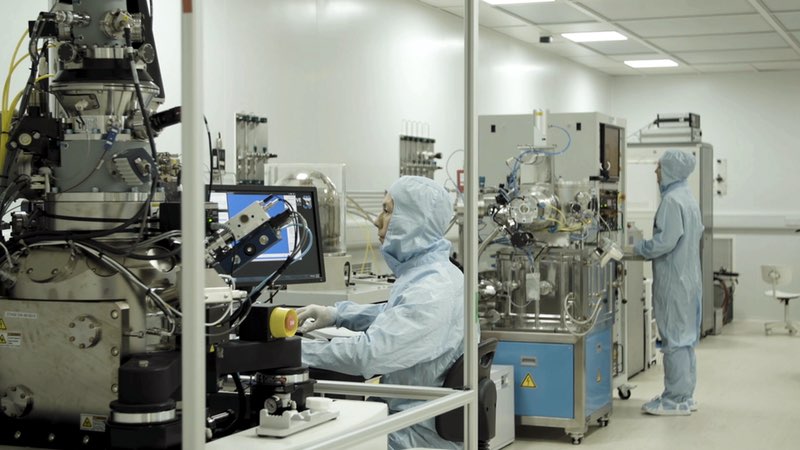Royal Holloway, University of London, has celebrated the official opening of its SuperFab, a new electronic nanofabrication facility in the UK.
Located in the Egham campus, some 36 km south-west London, the site houses advanced electronic nanofabrication equipment in a 300 sqm temperature-stabilised ISO Class 5 cleanroom. The ultra-clean environment was built by CRC.
“SuperFab puts Royal Holloway at the leading edge of superconducting device physics and quantum physics research," commented Professor Paul Layzell, Principal of Royal Holloway.
Royal Holloway’s SuperFab facility will accelerate the UK’s progress towards accessing the potential offered by quantum technology
For Layzell, Royal Holloway's SuperFab is a world-class facility that will boost the university's interdisciplinary research portfolio spanning the science departments. "As a resource for other scientists and researchers to use, I hope Royal Holloway’s SuperFab facility will accelerate the UK’s progress towards accessing the potential offered by quantum technology," he said.
Quantum circuitry
The facility is focused on the development of superconducting electronics and quantum circuits, which form the basis for future quantum technology, including new types of sensors and information processing devices working at the fundamental limits of sensitivity.
Quantum circuitry has potential applications in quantum simulation, communications and computing. New types of magnetic field sensing devices are already in use for next-generation medical imaging and new devices are thought likely to be useful in simulations of complex molecules (such as pharmaceutical drugs), as well as many other applications.
Quantum circuitry has potential applications in quantum simulation, communications and computing
Superconducting quantum circuits and quantum device technology are based on the application of fundamental phenomena related to superconductivity (the property of having no electrical resistance).
This field is of worldwide interest as it is thought to be one of the most promising platforms for the development of a future quantum computer. A quantum computer would significantly outperform present day computer technology for certain tasks.
Professor David Delpy, Chair of the Defence Scientific Advisory Council and Chair of the UK National Quantum Technologies Programme Strategic Advisory Board, added: “The creation of Royal Holloway’s SuperFab facility represents a major step forward for the UK’s capability in the field of superconducting quantum devices and the international race to develop quantum technology.”
World-class technology
Highlights of the capabilities of SuperFab include advanced electron beam lithography using the JEOL JBX-8100FS, and Helium and Neon focussed-ion-beam milling and microscopy utilising the latest Zeiss ORION Nanofab tool.
Processes are supported by a suite of other tools including ‘yellow’ room optical lithography and spin-coating, thin-film metals deposition, patterning, etching and characterisation.

Photo: Royal Holloway, University of London
SuperFab is the result of a collaboration between Royal Holloway and the National Physical Laboratory (NPL). It has received key government support from the Engineering and Physical Sciences Research Council (EPSRC), together with contributions from globally renowned equipment suppliers, JEOL and Zeiss, and support from others including Lancaster University.
The facility will be used by researchers at NPL’s Quantum Metrology Institute and by members of the Royal Holloway Quantum Institute and has strong links to the UK’s National Quantum Technology programme.




